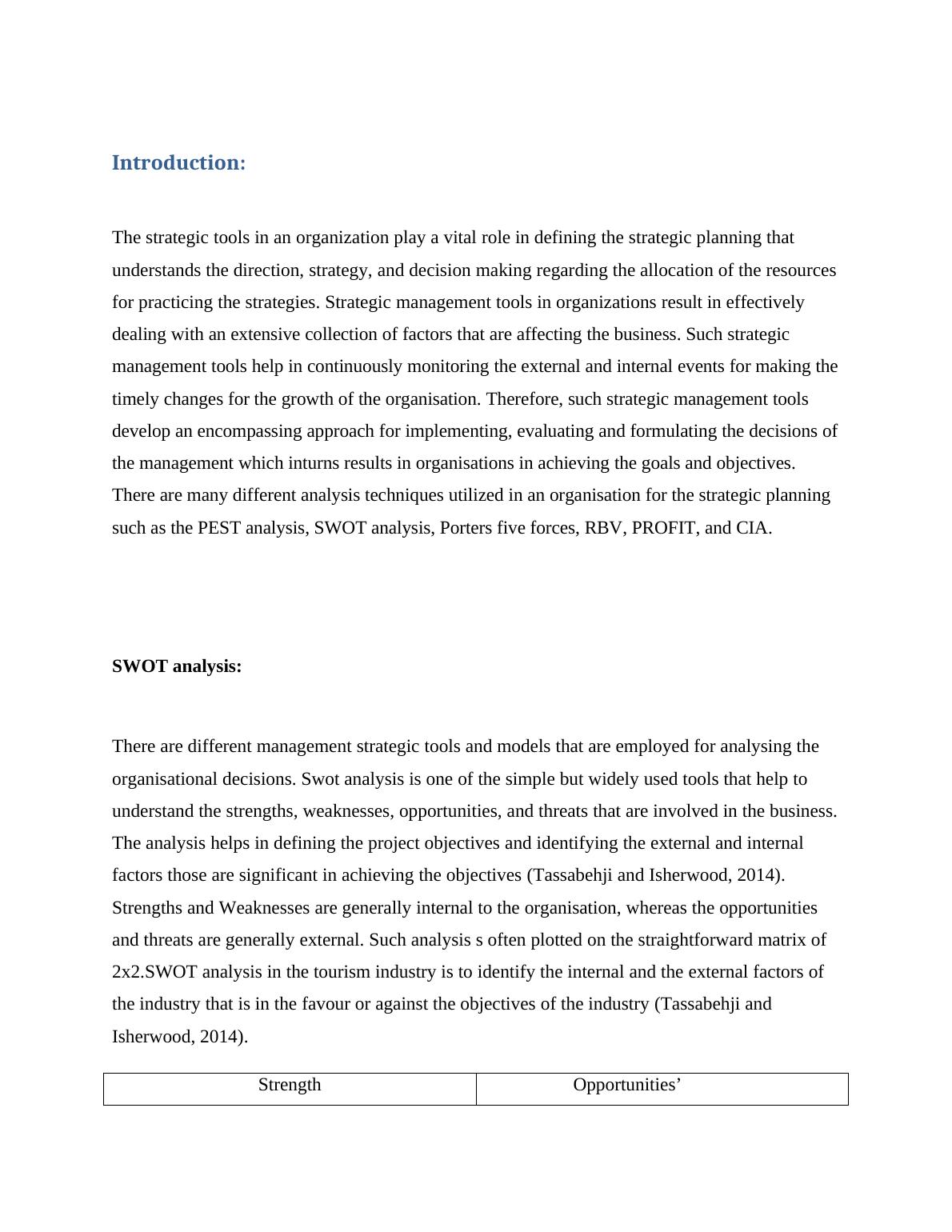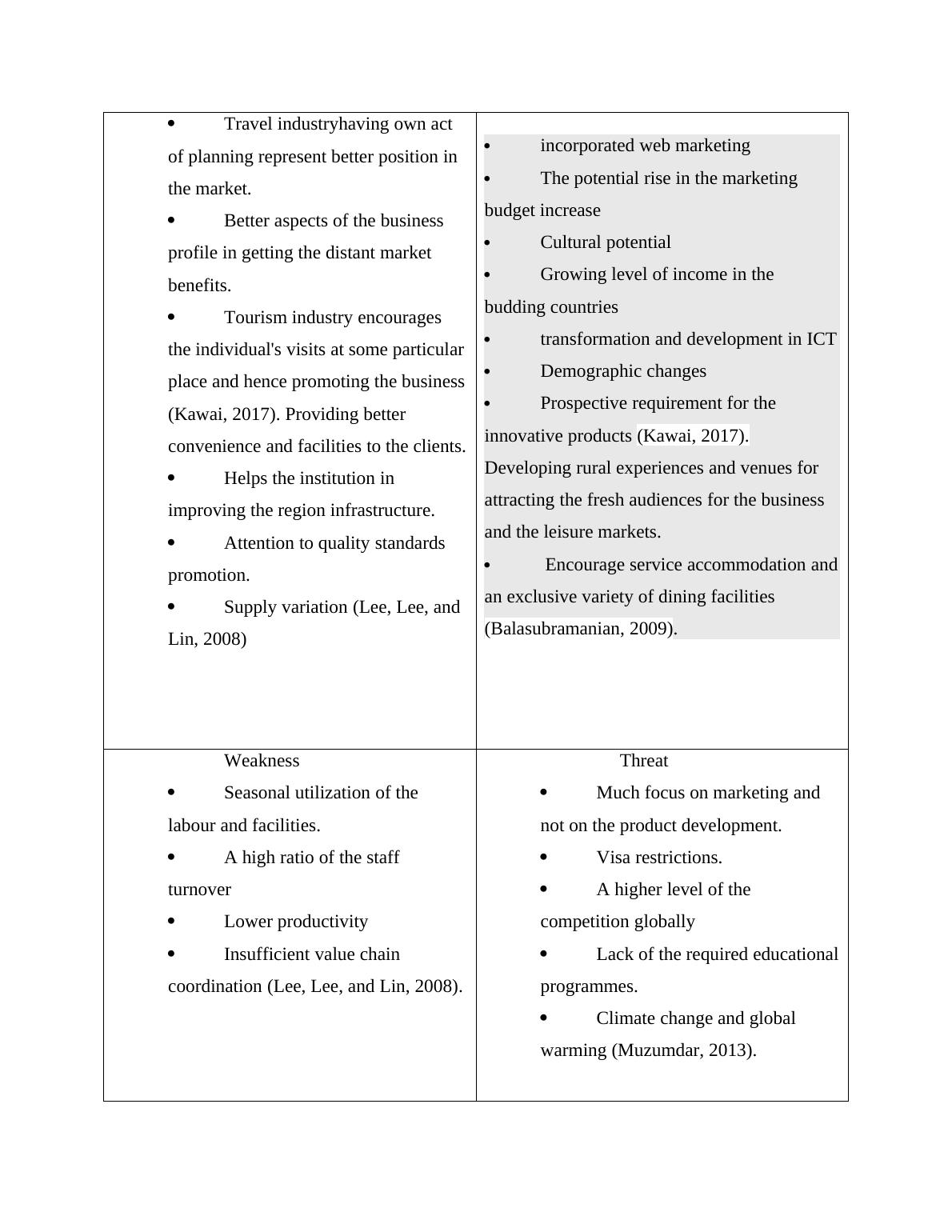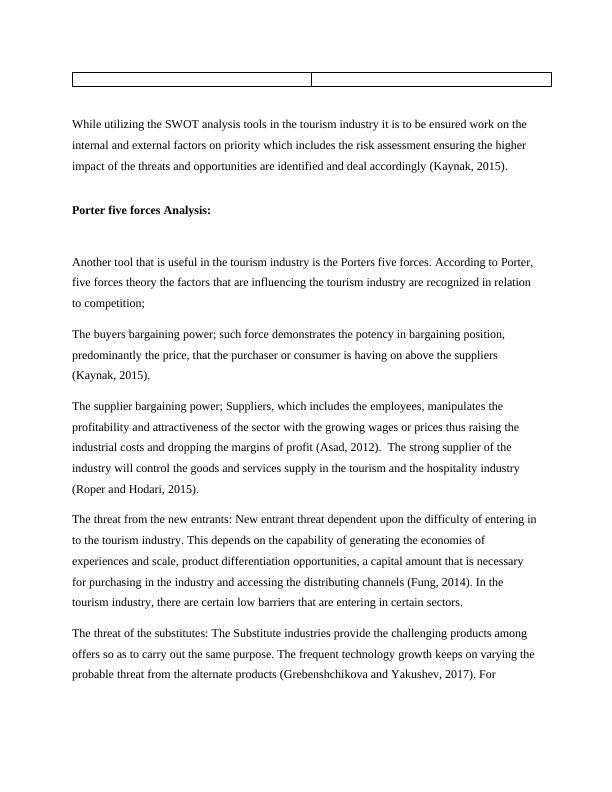Strategic Management Tools and Techniques (pdf)
Added on 2021-05-31
8 Pages2095 Words419 Views
Introduction:The strategic tools in an organization play a vital role in defining the strategic planning that understands the direction, strategy, and decision making regarding the allocation of the resourcesfor practicing the strategies. Strategic management tools in organizations result in effectively dealing with an extensive collection of factors that are affecting the business. Such strategic management tools help in continuously monitoring the external and internal events for making thetimely changes for the growth of the organisation. Therefore, such strategic management tools develop an encompassing approach for implementing, evaluating and formulating the decisions ofthe management which inturns results in organisations in achieving the goals and objectives. There are many different analysis techniques utilized in an organisation for the strategic planning such as the PEST analysis, SWOT analysis, Porters five forces, RBV, PROFIT, and CIA. SWOT analysis:There are different management strategic tools and models that are employed for analysing the organisational decisions. Swot analysis is one of the simple but widely used tools that help to understand the strengths, weaknesses, opportunities, and threats that are involved in the business.The analysis helps in defining the project objectives and identifying the external and internal factors those are significant in achieving the objectives (Tassabehji and Isherwood, 2014). Strengths and Weaknesses are generally internal to the organisation, whereas the opportunities and threats are generally external. Such analysis s often plotted on the straightforward matrix of 2x2.SWOT analysis in the tourism industry is to identify the internal and the external factors of the industry that is in the favour or against the objectives of the industry (Tassabehji and Isherwood, 2014). Strength Opportunities’

Travel industryhaving own act of planning represent better position in the market.Better aspects of the business profile in getting the distant market benefits.Tourism industry encourages the individual's visits at some particularplace and hence promoting the business(Kawai, 2017). Providing better convenience and facilities to the clients.Helps the institution in improving the region infrastructure.Attention to quality standards promotion.Supply variation (Lee, Lee, and Lin, 2008)incorporated web marketingThe potential rise in the marketing budget increase Cultural potentialGrowing level of income in the buddingcountriestransformation and development in ICTDemographic changes Prospective requirement for the innovative products (Kawai, 2017). Developing rural experiences and venues for attracting the fresh audiences for the business and the leisure markets. Encourage service accommodation andan exclusive variety of dining facilities (Balasubramanian, 2009). Weakness Seasonal utilization of the labour and facilities.A high ratio of the staff turnoverLower productivityInsufficient value chain coordination (Lee, Lee, and Lin, 2008). ThreatMuch focus on marketing and not on the product development.Visa restrictions.A higher level of the competition globally Lack of the required educationalprogrammes.Climate change and global warming (Muzumdar, 2013).

While utilizing the SWOT analysis tools in the tourism industry it is to be ensured work on the internal and external factors on priority which includes the risk assessment ensuring the higher impact of the threats and opportunities are identified and deal accordingly (Kaynak, 2015).Porter five forces Analysis:Another tool that is useful in the tourism industry is the Porters five forces. According to Porter, five forces theory the factors that are influencing the tourism industry are recognized in relation to competition; The buyers bargaining power; such force demonstrates the potency in bargaining position, predominantly the price, that the purchaser or consumer is having on above the suppliers (Kaynak, 2015). The supplier bargaining power; Suppliers, which includes the employees, manipulates the profitability and attractiveness of the sector with the growing wages or prices thus raising the industrial costs and dropping the margins of profit (Asad, 2012). The strong supplier of the industry will control the goods and services supply in the tourism and the hospitality industry (Roper and Hodari, 2015). The threat from the new entrants: New entrant threat dependent upon the difficulty of entering in to the tourism industry. This depends on the capability of generating the economies of experiences and scale, product differentiation opportunities, a capital amount that is necessary for purchasing in the industry and accessing the distributing channels (Fung, 2014). In the tourism industry, there are certain low barriers that are entering in certain sectors. The threat of the substitutes: The Substitute industries provide the challenging products among offers so as to carry out the same purpose. The frequent technology growth keeps on varying the probable threat from the alternate products (Grebenshchikova and Yakushev, 2017). For

End of preview
Want to access all the pages? Upload your documents or become a member.
Related Documents
Business Strategy Analysis 2022lg...
|16
|4568
|23
Competitive Strategy: PESTLE, SWOT, Five Forces, Ansoff Matrixlg...
|8
|1815
|440
Competitive Strategy: SWOT, PESTEL and Five Force Analysislg...
|6
|1785
|327
Using SWOT Analysis as a Strategic Toollg...
|8
|1479
|336
Strategic Tourism and Hospitality Managementlg...
|17
|1064
|37
Principles of Marketing: SWOT Analysis and Service Marketing Challengeslg...
|9
|1889
|200
